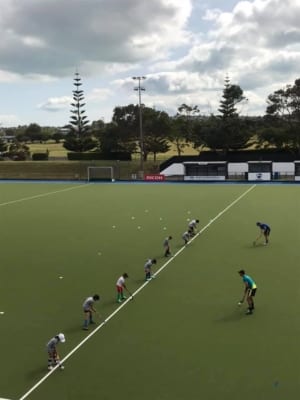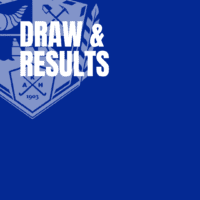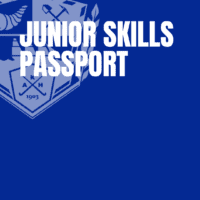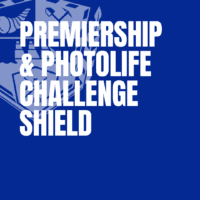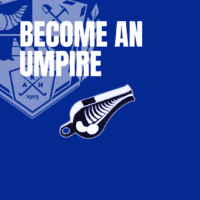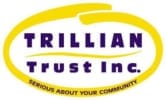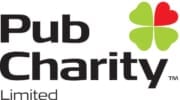This week Auckland Hockey introduces the “Auckland Hockey Blog” where we post articles and opinion pieces from invited Hockey experts from New Zealand and overseas.
Our CEO kicks things off with an Opinion Piece and insights from his teaching days.
Recently I read “New Zealand’s once world-leading school system is in trouble. Literacy and numeracy rates continue to decline across the board, leading many to question where we have gone wrong.” It was a fascinating read for a former teacher and Head of School and it was hard to not go past the parallel with our hockey children and their development.
Just as education reporter Amy Wiggins “examined whether teachers have been given the right tools to help children learn” I wondered aloud whether our first time coaches and others have also got the right tools in our current politically correct climate in NZ sport.
“When New Zealand 9- to 10-year-olds were asked to solve 27 × 43, only 16 per cent got the right answer – from a multiple choice question. Mathematician and tutor Dr Audrey Tan said our maths education system was literally worse than useless on that relatively simple equation for Year 5 students in the 2018/19 Trends in International Maths and Science Study (TIMSS). If the children had randomly guessed, their success rate should have been around 25 per cent. That means we’ve introduced something into the NZ education system that is so bad, our Kiwi kids would have been better off guessing.”
Teaching of hockey fundamentals or like us old people like to call it “ basics” is going down a similar path meaning we may be hockey illiterate very soon.
Just as Dr Tan is “arguing that a focus on the science of learning and a return to traditional teaching methods will go a long way in lifting achievement”, I have a belief that we need a similar hockey coaching focus to arrest the decline.
While the “Government has responded with a maths action plan and the development of a common practice model for literacy and numeracy the debate reignited recently after the launch of the National Party’s education policy, which focused on a back to basics approach in reading, writing, maths and science.” In Hockey in NZ we aren’t even having the debate as we continue to stumble along removing building blocks and pathways and hoping by some magic that small sided games will teach our children how to trap and pass efficiently so they can enjoy our great game. Seriously?
The big issue remains how children are being coached and learning fundamental skills in the first place. With the maths example “Students at one Kapiti Coast school are so excited about maths they have been choosing to do maths problems before school instead of playing with their mates. Kapakapanui School changed the way they were teaching maths last year and have already noticed an improvement in ability and increased enjoyment of the subject.
For anyone who grew up with the legendary Kathy Baker in Canterbury or Syd Torkington in Auckland, two master youth coaches, this scenario will resonate.
“Kids don’t do maths before school but it was practice, it was gaining success and they were feeling pretty good about it. So how did they do it? After noticing a decrease in their students’ confidence and ability in maths they asked Dr Tan to take their staff through some professional development sessions. That resulted in the school trying to simplify maths, largely by going back to an approach in which kids were taught to line up the numbers in columns to add, multiply, subtract and divide. For about 20 years, most schools have followed an approach called the Numeracy Project which promoted teaching a range of strategies for solving problems. Column maths was a part of that but was not taught until later in a student’s primary schooling. We reckon that’s wrong, one Principal said, Kids have had several years of getting a bit confused on different things. It should have probably been introduced earlier. Going back to column maths was giving kids a tool that was reliable and simple and allowed them to solve big problems. When they can solve big problems they think, ‘hey, I can do maths’ and they quite like maths. Then they’re more open to solving more challenging things.”
Again, sound familiar? Most humans and junior hockey players, tennis players, etc, etc, like the idea of mastering something. Mastering so you have the tools to actually enjoy their sport. My old primary school teacher Ms Lye (a former Davis Cup player) would not have been impressed. She gave me an old tennis racket, showed me how to hit a forehand, and then told me to come back and see her when I could hit the ball back 100 times without missing the return. Only then would she play me in a “game”, well sort of, more like a “hit up” before a game! If I had asked her if I could learn the game from just playing padder tennis on a small court with my friends once per week she would have laughed.
In the Maths article one Principal said “they had stopped introducing a number of strategies, which he believes was resulting in cognitive overload for many students, causing them to decide they hated maths or were no good at it. It was confusing the kids. They were losing their confidence”. Again, sound familiar?
So it is that we can have a small sided game with lots of touches but can we teach how to protect the ball within that game and how to make a solid pass and have good vision if we don’t first give children the basic technique required to stop and pass a ball and correct ball carrying position at one o’clock? The small sided game will move around the child without these fundamental skills and they won’t get the famous “more touches”.
The smart Maths schools “have taken up a teaching method known as the science of learning.” It’s equally applicable to sport. “It is based on research by neuroscientists who have discovered how the brain learns. Those in the science of learning camp argue all teachers should have an understanding of it and teach accordingly.”
The cognitive process for learning has not changed and is the same for all students both in the classroom or on the field of play. It is around the importance of memory and in the case of executing a sports skill “muscle memory”.
Before humans start problem-solving or thinking critically we need knowledge about a topic embedded into our long-term memory. When we learn new information this happens in our working memory. Unfortunately, there is a limit on how much information our working memory can hold and for how long. This is called cognitive load theory. As a young teacher I learned I needed to teach my Accounting classes in small bites and to give my students many practice examples so they could practice that information and use it in different ways in order to shift it into their long-term memories where they now had a building block. If I had tried to get through the basics too fast I ran the chance of overloading my class and them not recalling, interpreting or applying the content properly.
In the article Dr Tan was “fiercely critical of both the current maths curriculum and the way New Zealand teachers are now taught and expected to teach maths. We see high school students lacking many of the skills and dispositions required to work effectively at that level. We do what we have to do to get them through their exams, but all we’re doing is wallpapering over the cracks. It does not make up for the significant gaps in their primary school maths education”. Sound familiar?
At Auckland Hockey I see mine and Rochi’s role when working with junior coaches to show them the important basic skills children are missing and then to show the coaches how to integrate these skills into their coaching. The next action is to show the coaches how their players can reinforce and practice the skills by themselves at home so as the season progresses the players can see and feel their improvement.
My time coaching in Spain introduced me to the world of football and how the Europeans teach the game’s fundamentals so well. Recently on the sidelines of a junior football game I spoke with a father of a former All White World cup player and Olympian who wrote to me afterwards answering my questions about what he believed was the priority when coaching and introducing the game to our youngsters. His words rang true – “at the end of the day, improvement in the ability of kids comes down to the good coaching of good technique at a very young age and the amount of time spent on it (I’m talking years here, from at least 4yrs to 11/12 years). By then, the basics should have become instinctive, natural, and intrinsic. The basics of controlling the ball, passing, shooting, dribbling, heading, running with the ball etc. For me, these things are the key factors irrelevant of the resources. We focus on these aspects at our club. Consequently, we often have proportionately more technically adept kids in our teams than equivalent kids in other teams. This makes a bigger difference at the younger age groups as the kids are still growing and developing. Of course, it also begins to show in the results. We also work on other things positional play, keeping shape, pass and move, defending as a team, attacking as a team etc, …..the competitive element of matches should not be lost, even at these young age groups.”
In the words of Dr Tan, “there’s only so much that children can absorb at any one time. Start with the basic building blocks and build on that. You learn by actually doing. And through the doing we can unpack that and understand how it actually works. At primary school we’ve taken away the easiest methods and tried to make them think like adults, but they’re not adults. It is basic common sense that we would start with the easiest methods first and then refine those methods later with more sophisticated strategies.”
So, some may say our best coaches need a teaching background or “teaching is coaching and coaching is teaching” but I will leave that to another day.
Manoj Daji QSM
